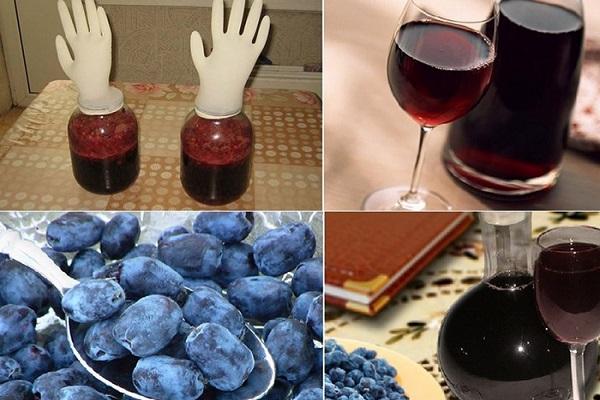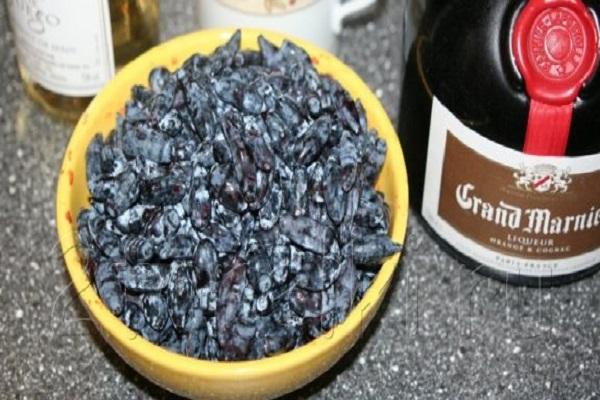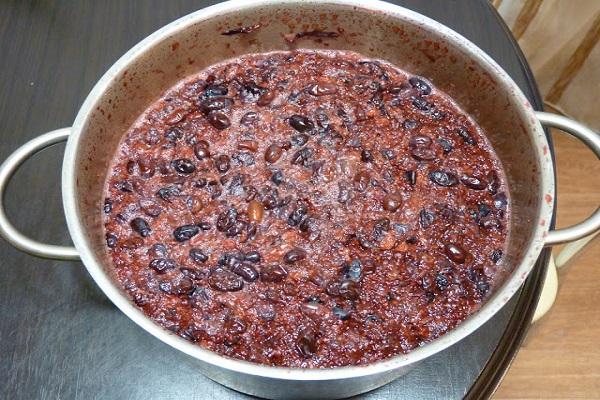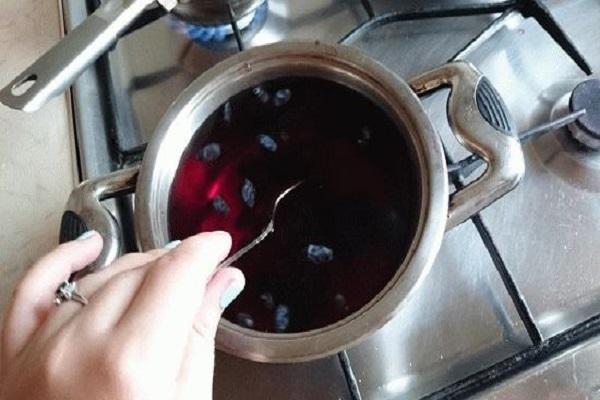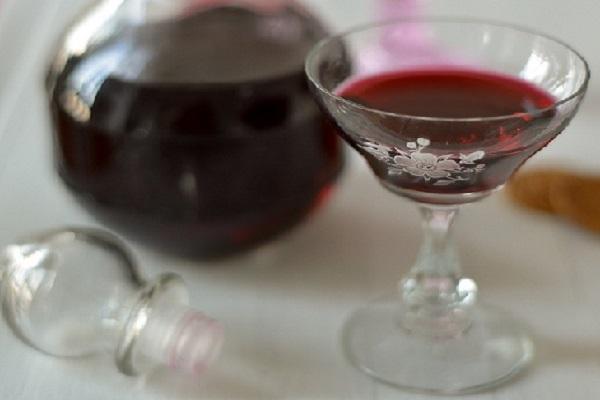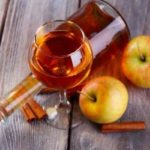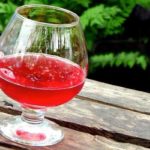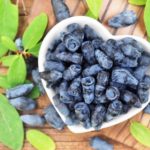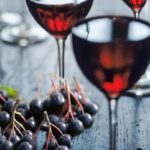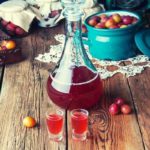Light sourness plus a subtle aroma. In honeysuckle wine made at home using a simple recipe, these characteristics do not appear immediately. Several months pass after fermentation ends. A winemaker who shows patience can be proud of the result of his work. You can invite all your friends to a homemade wine tasting.
Features of making wine from honeysuckle
The drink is made from high-quality raw materials.Ripe specimens are selected without signs of rotting, traces of mold, or spoilage. Pathogenic microorganisms that get into the wort will interfere with the fermentation process. The wine won't work.
Berries collected from your own garden are usually not washed. If rinsed, allow the moisture to completely evaporate before use. The fermentation tank is cleaned. There should be no pathogenic microorganisms left on the walls.
Tips that will be useful for a novice winemaker:
- There are living microorganisms on the skin of honeysuckle. They are called wild yeast. They participate in the fermentation process. If you don’t wash the berries, you can make wine without commercial yeast. To ensure that there are more beneficial bacteria, honeysuckle for homemade wine is not collected immediately after rain.
- Containers for dairy products and pickles are not suitable for wine. There are many microorganisms on its walls that worsen the taste of the alcoholic drink.
- The starter of water, berries, and sugar is mixed every day. Mold will form in the pulp if this is not done.
- The fermentation container is filled with pulp to ⅔ volume. They leave room for the gas that is released during fermentation.
- Beneficial microorganisms work better at a temperature of 20-25 °C.
- Bottles of wine are placed horizontally. A cork soaked in wine does not dry out.
How to make honeysuckle wine at home
In June there is a lot to do in the garden and garden plot, it is difficult to find a free minute. If you have a simple recipe at hand, it will take little time to process honeysuckle and make wine.
Professional recipe
This method is used if there are a lot of berries. Before storing, the raw materials are sorted, washed, then poured into a large container and a little water is added. Add 50 g of sugar per 1 kg of total weight. The berries ferment for 3 days.
They secrete juice. It is drained and the thick mass is squeezed out.All liquid is poured into a fermentation container. The squeezes are filled with water for 3 days. On the 4th day, squeeze it out. The juice obtained is added to the first pressing wort. Add 400 g of sugar and mix.
The mass wanders for a week. Then for every liter of liquid add 200 g of sugar. Fermentation lasts another week. Then the wine is filtered. Bring to readiness at 10 °C. The wine, ready to drink, becomes lighter.
Easy way
The simplest recipe only has 3 ingredients. Berries, granulated sugar, water. The proportions of raw materials are as follows:
- honeysuckle - 1 part;
- water - 1 part;
- sugar - ⅔ part.
The berries are crushed with a wooden masher, half the sugar and all the water are added. The berry mass is mixed, covered with a canvas napkin or two layers of gauze. At room temperature, the pulp ferments for about 4 days.
Signs of normal fermentation should appear after 6-12 hours. Their description:
- hat made of foam, berries;
- hiss;
- sour smell.
If they are missing, then add sugar. Add no more than ⅒ of the entire mass. On the 5th day, the pulp is filtered, the cake is squeezed out, and the liquid is poured into a fermentation container. Don't fill it to the top. They leave room for gases that will be released during fermentation. Add ⅓ of the remaining sugar. A glove is put on the neck.
5 days pass. A little wort is drained from the bottle. Dissolve 60% of the remaining sugar in it. The resulting syrup is poured into a fermentation tank for the wort. They install the shutter. On the 5th-6th day add sugar. The wort ferments for 1-1.5 months.
The end of the fermentation process is controlled.
The young wine is decanted through a thin tube, leaving sediment at the bottom of the fermentation tank. It is bottled. Pour just under the cork to reduce contact with oxygen. The drink is allowed to mature.He is sent to a dark, cool room for 2-3 months.
Option without adding water
Take 2 kg of berries and 500 g of sugar. Honeysuckle is not washed. It is sorted, removing spoiled specimens, and crushed to a homogeneous mass. The puree is made using a meat grinder or blender. The mass is poured into a jar. The neck is covered with a canvas napkin and tied with a ribbon.
The fermentation container is placed in a dark, cool room for 2-3 days. The berry mass should release juice. It is expressed on the 3-4th day. The pulp is squeezed out. Add 1 tbsp to it. sugar, stir. A day later they squeeze it out. The juice (wort) is poured into a fermentation container.
The pulp is thrown away. She gave everything. The remaining sugar is poured into the bottle. A glove is put on the neck. It rises if there is active fermentation. After a month it falls off. This is a signal that indicates the end of fermentation.
Honeysuckle wine is not ready yet. You can drink it in a month. In the meantime, it is carefully drained from the residue through a thin tube. Bottled. Put away for storage.
Honeysuckle liqueur
It is easier for a novice winemaker to master the technology of making liqueurs from seasonal berries and fruits. Honeysuckle begins to sing at the beginning of summer. It doesn't crumble. It is easy to assemble. The berries are clean, so there is no need to wash them.
For homemade liqueur take:
- 4 parts berries;
- 1 part vodka;
- ⅓ part water;
- ⅓ part sugar.
Wash the honeysuckle if desired. Place in a colander to drain all the water. Pour into a non-oxidizing (enamel) container. Pour in water. Add sugar. Cook. Control boiling. Remove from heat when all the berries have burst. Pour in vodka, maybe moonshine.
Pour the mixture into a jar. Infuse for 3 weeks. Place the container in a closet or pantry. Sunlight negatively affects the processes occurring in the bank.
Strain the finished liqueur, pass through a cotton wool filter, and pour into glass bottles.
Terms and conditions of storage
During the first 2-3 months, bottles are checked for sediment. If it appears, the wine is poured into a clean bottle. Express through a small diameter tube. Homemade alcohol is stored for 2-3 years at a temperature of 5-15 °C. A dry cellar is the ideal storage for homemade wines. It has a constant temperature, humidity, and no natural light.


